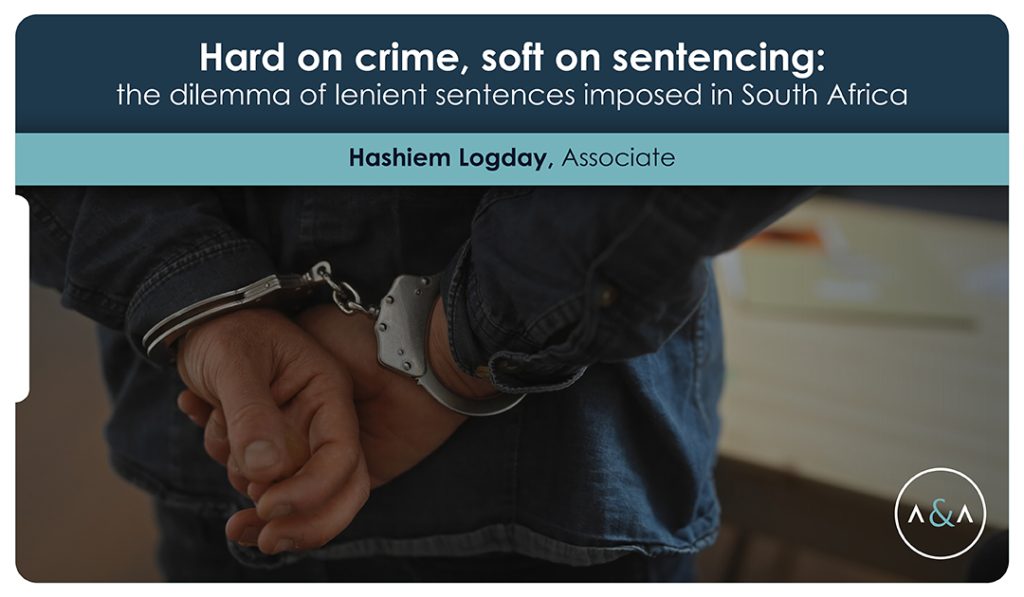
Hashiem Logday
We see it weekly in the news, “South African National Anti-Counterfeit Task force seizes counterfeit goods worth R100 million rand, suspects arrested”. But what happens to these suspects arrested and charged in counterfeit goods matters?
Make no mistake, the Counterfeit Goods Act No. 37 of 1997 (“the CGA”) criminalises the act of dealing (selling, offering for sale, manufacturing, distributing, importing) in counterfeit goods.
Briefly, “counterfeiting” refers to protected goods (in terms of the CGA) which are imitated to such a degree that those goods are substantially identical copies of the protected goods or colourable imitations thereof so that they are calculated to be confused with or be taken as being the protected goods.
As dealing in counterfeit goods is a criminal offence in terms of the CGA, the Act prescribes penalties (Section 19) which must be imposed. These penalties are:
- First conviction – punishable with a fine, in respect of each article or item involved in the particular act of dealing in counterfeit goods to which the offence relates that may not exceed R5000-00 per article or item, or with imprisonment for a period not exceeding 3 years, or with both fine and such term of imprisonment and
- Second or subsequent convictions – fine not exceeding R10 000-00 per article or item and/or imprisonment not exceeding 5 years.
At first glance, the penalties provided for appear to be adequate and indicative of an aggressive approach towards offenders dealing in counterfeit goods. Merely as an example, a fine of R500 000 could be imposed on a first-time offender found in possession of 100 counterfeit T-shirts. In practice, however, the reality is far from this when sentences are imposed. From looking at past cases, the courts have adopted a more lenient approach when it comes to sentencing accused persons in cases dealing with contraventions of the CGA.
Two recent matters illustrate where the courts opted to be lenient when sentencing manufacturers of counterfeit goods:
Matter 1:
The Police executed search and seizure warrants at several premises and seized significant quantities of cigarette paper rolls, sanitary towels, branded packaging, and large industrial manufacturing machinery used to cut and fold the relevant cigarette paper. The market value of the completed cigarette paper products amounted to approximately R720 000. This excluded the significant quantities of raw materials, two large industrial machines and completed sanitary towels which amounted to approximately R2.5 million, excluding empty branded packaging and unbranded sanitary towels.
The following sentence was issued:
- a fine of R60 000;
- 3 years direct imprisonment, half of which was suspended for 5 years, on condition that the accused person is not found contravening the provisions of the Counterfeit Goods Act during this period; and
- all of the seized goods were forfeited to the State.
This means that a fine of R60 000 was imposed where the value of the seized counterfeit goods amounted to around R3.7 million. Does this balance?
Matter 2:
The Police executed a search and seizure warrant at a premises and seized 14 x 210L drums of counterfeit engine oil, manufacturing machinery, and packaging material. The market value was approximately R210 000, excluding the machinery.
The following sentence was issued:
- The accused was sentenced to a fine of R67 000 or three years direct imprisonment, wholly suspended for five years on condition that the accused is not found guilty of the same offence during the period of suspension; and
- The accused was sentenced to a further fine of R3 000, or in the alternative, three years direct imprisonment. An order was also made that the seized counterfeit goods be delivered up to the intellectual property owner.
Does the potential value of R210 000 correspond with the severity of a R3 000 fine?
The above examples are only two instances of formal criminal cases that were pursued in criminal court trials. Often matters are simply finalised by means of a quick admission of guilt fine that is paid in small amounts.
Unfortunately, the inference drawn from these lenient sentences may be that counterfeiting is viewed as a “victimless” crime and merely a case of big multinational corporation losing out on profits. However, if closer attention is paid to the nature of counterfeit goods being seized by the authorities including counterfeit sanitary pads, counterfeit engine oil, and consumable products, it becomes more evident that the dealing in counterfeit goods could also affect our safety and wellbeing directly. We are the unsuspecting victims.
Does the punishment fit the crime? Perhaps not.
Hashiem Logday, writes in his personal capacity.
INFO SUPPLIED.


